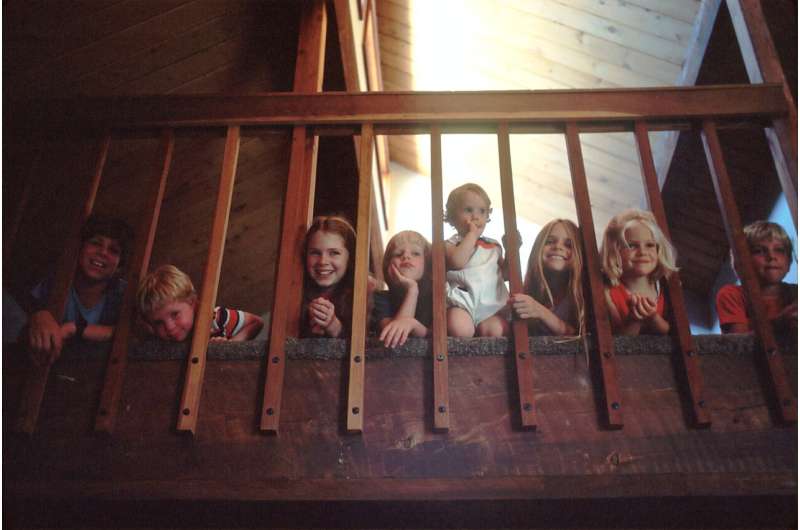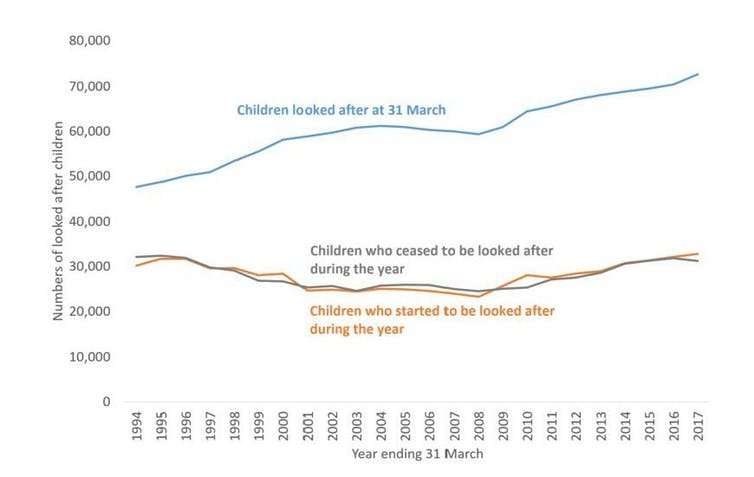What happens to mothers whose children are repeatedly taken into care

If a child is born to a woman who is addicted to drugs, the baby is often taken away from its mother. A new investigation by the BBC's Panorama programme looked at the struggle some of these women go through to get their babies back.
Helping these mothers is not only the right thing to do, it can help address the record numbers of children going into care. My ongoing research with vulnerable mothers, who've had one or more children taken into care, reveals how many are subsequently abandoned by the system.
The number of looked-after children has risen steadily since the early 1990s. The Children and Family Court Advisory and Support Service reported a 64% increase in the rate of care applications made between 2008-9 and 2013-14 – up from 6,488 to 14,599.
There are complex reasons behind the sharp rise, though it followed the death in 2007 of "Baby P", Peter Connelly, after months of abuse, despite numerous visits from authorities. His death placed a spotlight on professionals involved in child protection decisions. While local authorities responded with different strategies following the highly publicised case, all saw rises in care applications in subsequent years.
The most common reason why children are removed from parents into care is neglect. This is often related to the underlying needs of the parents, who may have mental health problems, alcohol or drug disorders, or be in an abusive relationship. When a social worker or other professionals have safeguarding concerns around a pregnant woman, they may carry out a pre-birth assessment. If there is evidence that there is risk of significant harm to the unborn child, they can apply for a care order to remove the child from the mother shortly after birth. But it can vary depending where the mother lives, and different local authorities use different tools and timescales to assess these risks.
Listening to mothers
My research is highlighting how traumatic birth mothers find the removal of their child, which often compounds multiple and complex problems. Women who had multiple pregnancies followed by the removal of each child experience a period of intense intervention from social services followed by a feeling of abandonment once the child is taken into care.
Most of the women I've spoken to are deprived in multiple ways. Some have been through the criminal justice system and are powerless to counter the decisions made by professionals involved in the removal of their children. Those mothers with a history of being in care themselves were also more likely to have their children removed.

One 33-year-old woman whose son was removed, and placed with a temporary foster family, just a few hours after birth told me, "I'm finding it hard … How am I gonna carry on without my boy? My heart's broke … I'm not gonna get through it."
She was able to visit her son in a contact centre three times a week with supervised contact while waiting for a decision on the child's future from the family court. This was her fifth child, the previous four were no longer in her care. Like other mothers that I spoke to she had experienced abuse as a child. She had also been the victim of severe domestic violence while she was pregnant, and was still in recovery from drug addiction. She told me, "I want to be a mum now, I just want to settle down and live my life with [him] … It's me past, and I know I've got a horrendous past, but people can change, but it's just giving me that chance to show that I've changed … I'm just not being given that chance … I'll never stop being labelled because of my past."
One of the first attempts to measure the scale of this issue in England in 2015 found that in a sample of 7,143 women, 16% of birth mothers were caught in a cycle of repeat pregnancies and these women were linked to almost a third of all care applications. Researchers also found that a total of 22,790 children were connected to these mothers, because a birth mother was often linked to more than one child going through the system.
A shift in child protection
There are complex reasons behind these statistics. One factor has been the shift from child welfare to child protection which has changed the nature of social work. Rather than supporting children to remain within their families, the focus is on making parents who do not display acceptable behaviours more responsible, through risk assessments and interventions.
There is higher pressure from larger, more complex caseloads combined with a fear of getting things wrong – understandably so when major publicity accompanies this. As a result, social workers have less time to devote to each case and are more risk averse in their decision making.
A continued focus on the child rather than on supporting better parenting is not new, but it appears to contradict the efforts of the government's Troubled Families programme which aims to support parents in those families with multiple problems, rather than having a strict focus on child protection.
Emerging projects are trying to prevent recurrent births and removals into care, but these solutions often focus on promoting long-term contraception or sterilisation. Such approaches raise many ethical questions, but also highlight a flaw in how the issue is being approached: it places little value on the life of the mother and her welfare.
This article was originally published on The Conversation. Read the original article.![]()

















